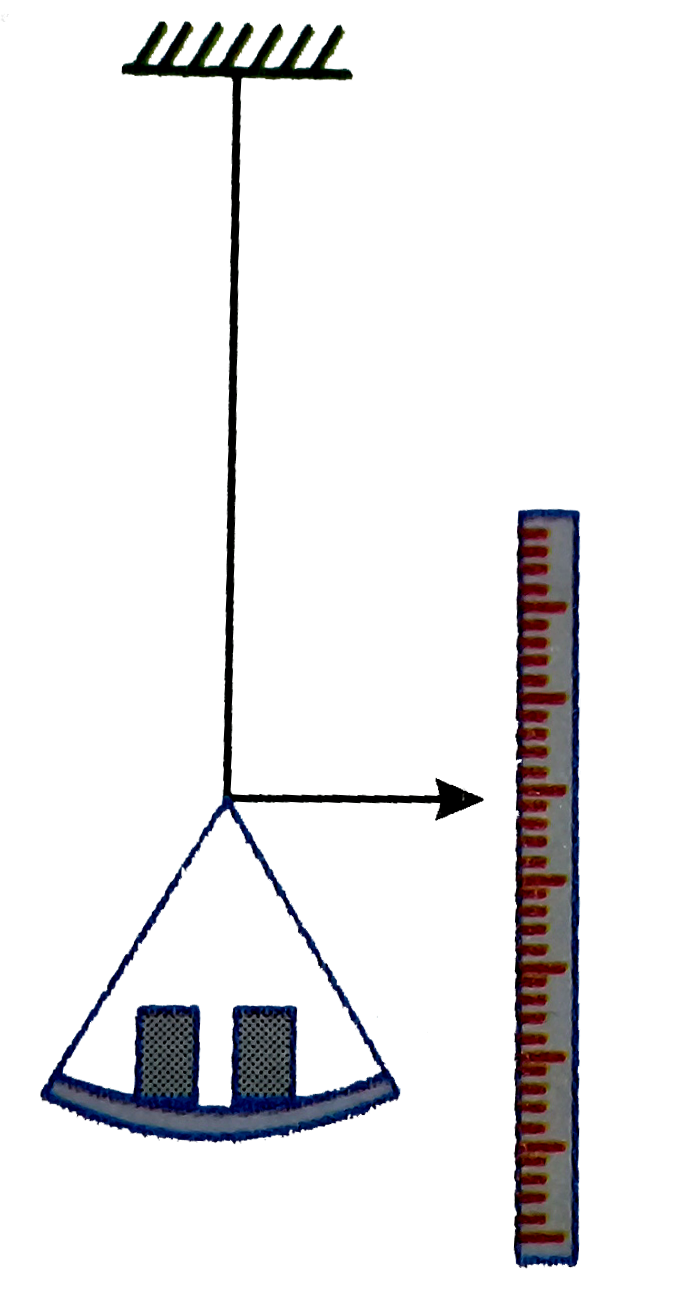In an experiment for measurement of young's modulus, following readings are taken. Load = 3.00 kg, length = 2.820 m, diameter = 0.041 cm and extension = 0.87. We shell determine the percentage error in measurement of Y.
To determine the percentage error in the measurement of Young's modulus (Y), we will follow these steps:
Step 1: Understand the formula for Young's Modulus
Young's modulus (Y) is defined as the ratio of stress to strain:
Y=StressStrain
Where:
- Stress = FA (Force per unit area)
- Strain = ΔLL0 (Change in length per original length)
Step 2: Write the expression for Young's Modulus
The formula can be expressed as:
Y=F⋅L0A⋅ΔL
Where:
- F=m⋅g (Force due to the load)
- L0 = original length
- A = cross-sectional area
- ΔL = extension
Step 3: Calculate the area (A)
The area (A) of a circular cross-section can be calculated using:
A=π(d2)2
Where d is the diameter. Given d=0.041 cm = 0.00041 m (conversion to meters):
A=π(0.000412)2
Step 4: Calculate the errors in measurements
The percentage error in Young's modulus can be calculated using the formula for error propagation:
ΔYY=Δmm+ΔL0L0+ΔAA+ΔΔLΔL
Step 4.1: Calculate individual errors
1. Error in mass (m): Given m=3.00 kg, assume Δm=0.01 kg.
Δmm=0.013.00
2. Error in original length (L0): Given L0=2.820 m, assume ΔL0=0.001 m.
ΔL0L0=0.0012.820
3. Error in area (A):
- Diameter d=0.041 cm = 0.00041 m, assume Δd=0.001 cm = 0.00001 m.
A=π(0.000412)2
- Calculate A and then find ΔA:
ΔA=2⋅Δdd⋅A
ΔAA=2⋅0.000010.00041
4. Error in extension (ΔL): Given ΔL=0.87 m, assume ΔΔL=0.01 m.
ΔΔLΔL=0.010.87
Step 5: Substitute values and calculate total error
Now substitute all the calculated values into the error propagation formula:
ΔYY=0.013.00+0.0012.820+2⋅0.000010.00041+0.010.87
Step 6: Calculate the percentage error
Multiply the total error by 100 to convert it to percentage:
Percentage error=(ΔYY)×100
Final Calculation
After performing the calculations, you will arrive at the percentage error in the measurement of Young's modulus.
Young's modulus (Y) is defined as the ratio of stress to strain:
Y=StressStrain
Where:
- Stress = FA (Force per unit area)
- Strain = ΔLL0 (Change in length per original length)
The formula can be expressed as:
Y=F⋅L0A⋅ΔL
Where:
- F=m⋅g (Force due to the load)
- L0 = original length
- A = cross-sectional area
- ΔL = extension
The area (A) of a circular cross-section can be calculated using:
A=π(d2)2
Where d is the diameter. Given d=0.041 cm = 0.00041 m (conversion to meters):
A=π(0.000412)2
The percentage error in Young's modulus can be calculated using the formula for error propagation:
ΔYY=Δmm+ΔL0L0+ΔAA+ΔΔLΔL
1. Error in mass (m): Given m=3.00 kg, assume Δm=0.01 kg.
Δmm=0.013.00
ΔL0L0=0.0012.820
- Diameter d=0.041 cm = 0.00041 m, assume Δd=0.001 cm = 0.00001 m.
A=π(0.000412)2
- Calculate A and then find ΔA:
ΔA=2⋅Δdd⋅A
ΔAA=2⋅0.000010.00041
ΔΔLΔL=0.010.87
Now substitute all the calculated values into the error propagation formula:
ΔYY=0.013.00+0.0012.820+2⋅0.000010.00041+0.010.87
Multiply the total error by 100 to convert it to percentage:
Percentage error=(ΔYY)×100
After performing the calculations, you will arrive at the percentage error in the measurement of Young's modulus.
Topper's Solved these Questions
- WAVES AND OSCILLATIONSBook:ALLENChapter:WAVES AND OSCILLATIONSExercise:Part-3(Example)
Explore 32 Videos
- WAVES AND OSCILLATIONSBook:ALLENChapter:WAVES AND OSCILLATIONSExercise:Part-1(Exercise-01)
Explore 53 Videos
- WAVES AND OSCILLATIONSBook:ALLENChapter:WAVES AND OSCILLATIONSExercise:Part-1(Exercise-05)[B]
Explore 42 Videos
- SEMICONDUCTORSBook:ALLENChapter:SEMICONDUCTORSExercise:Part-3(Exercise-4)
Explore 51 Videos
Similar Questions
Knowledge Check
If the length of a cylinder is measured to be 8.28cm with an error of 0.01cm then the percentage error in measured length is nearly.
A0.4%B0.2%C0.1%D0.5%If the length of a cylinder is measured to be 4.28cm with an error of 0.01cm, the percentage error in the mesured length is nearly
A0.4%B0.5%C0.2%D0.1%In a resonance tube experiment, resonance occures first at 32.0cm and then at 100.0cm. What is the percentage error in the measurement of end correction.
A2.5%B5%C7.5%D10%
If the length of a cylinder is measured to be 4.28cm with an error of 0.01cm, the percentage error in the mesured length is nearly
View SolutionIn the experiment to determine Young's modulus of the material of a wire under tension
used in the arrangement as shown. The percentage error in the measurement
of length is a in the measurement of the radius of the wire is b and in the
measurement of the change in length of the wire is c. Percentage error in the measurement
of Young's modulus for a given load is

View SolutionIn the experiment to determine Young's modulus of the material of a wire under tension used in the arrangement as shown. The percentage error in the measurement of length is a in the measurement of the radius of the wire is b and in the measurement of the change in length of the wire is c. Percentage error in the measurement of Young's modulus for a given load is

View SolutionA wire has a mass (0.2±0.002) g, radius (0.7±0.007) mm and length (3±0.09) cm. The maximum percentage error in the measurement of its density is
View SolutionA wire has a mass 0.3±0.003g, radius 0.5±0.005mm and length 6±0.06cm. The maximum percentage error in the measurement of its density is
View Solution
